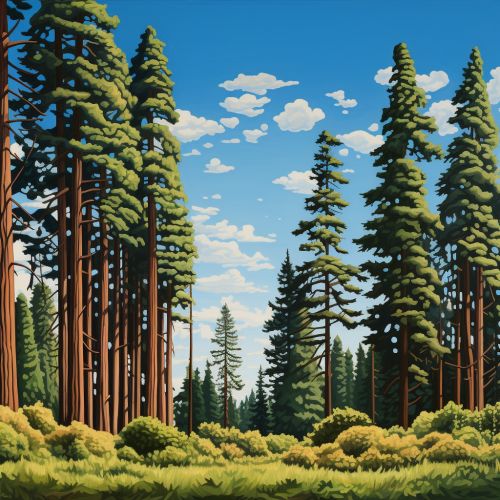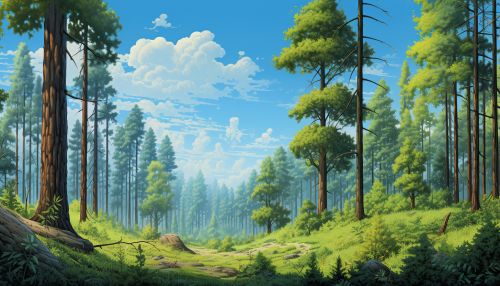Sequoia National Park
Overview
Sequoia National Park is a national park in the southern Sierra Nevada region of the U.S. state of California. Established in 1890, it is notable for its giant sequoia trees, including the General Sherman tree, which is the largest tree on Earth by volume. The park spans over 404,064 acres (631.35 sq mi; 1,635.18 km2) and includes a vertical relief of over 13,000 feet (4,000 m).
Geography and Climate


Sequoia National Park is located in the southern Sierra Nevada. It is bordered by Kings Canyon National Park to the north and the Giant Sequoia National Monument to the north and west. The park's topography is characterized by its rugged, mountainous terrain, with elevations ranging from 1,370 to 14,505 feet (417 to 4,421 m). The park's highest point is Mount Whitney, the tallest mountain in the contiguous United States.
The climate in Sequoia National Park is Mediterranean, with mild, wet winters and hot, dry summers. The park receives most of its precipitation in the form of snow during the winter months. The park's diverse elevation gradient results in a wide range of microclimates, with temperatures and precipitation levels varying significantly across different areas of the park.
Flora and Fauna
Sequoia National Park is home to a rich diversity of plant and animal species. The park's most iconic inhabitants are its giant sequoia trees, which are among the oldest and largest living organisms on Earth. Other notable tree species in the park include the Jeffrey pine, white fir, and red fir.
The park's fauna is equally diverse, with over 200 species of birds, 26 species of reptiles, and 72 species of mammals recorded in the park. Notable mammal species include the black bear, mule deer, and mountain lion. The park is also home to a variety of amphibians, including the Sierra Nevada yellow-legged frog and the western toad.
Recreation
Sequoia National Park offers a wide range of recreational activities. Hiking is a popular activity, with over 800 miles of trails, including the John Muir Trail and the High Sierra Trail. Other activities include camping, horseback riding, fishing, and wildlife viewing. In the winter, visitors can enjoy snowshoeing and cross-country skiing.
Conservation Efforts
Conservation efforts in Sequoia National Park are primarily focused on protecting and preserving the park's giant sequoia trees. The park employs a variety of strategies to manage these iconic trees, including prescribed burning to mimic the natural fire cycles that the sequoias depend on for reproduction. Other conservation efforts in the park include habitat restoration, wildlife management, and invasive species control.
